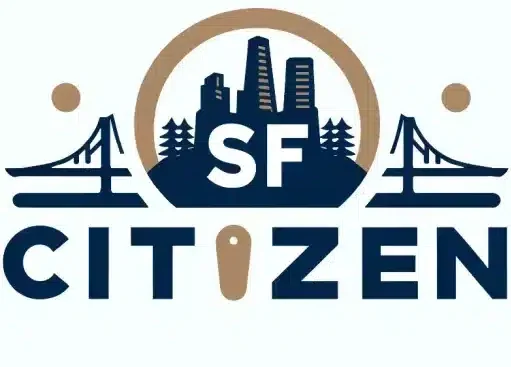San Francisco is not just a cultural and financial hub; it is also the starting point for more than 15 million visitors annually who journey to explore Northern California’s renowned wine country. Situated less than an hour’s drive from the city, Napa Valley offers a stark contrast with its tranquil landscapes and world-class wineries. This gateway from urban to rural highlights the unique position of San Francisco, serving as the perfect launching pad for visitors looking to experience the best of both environments
In This Article
Key Points:
- The Bay Area serves as an ideal starting point for exploring Northern California’s renowned wine country, with San Francisco at its heart.
- Travelers can choose from various transportation options, including driving, guided tours, public transit, and the Napa Valley Wine Train.
- Napa Valley offers a wealth of unique experiences, from world-class wineries and Michelin-starred restaurants to stunning landscapes and outdoor activities.
The San Francisco Bay Area, with its vibrant culture, diverse landscapes, and proximity to Northern California’s wine regions, is the perfect gateway for embarking on a journey to the world-famous Napa Valley. Just a short drive from the bustling streets of San Francisco lies a picturesque countryside dotted with rolling hills, lush vineyards, and charming towns that make up this renowned wine destination.
The Heart of San Francisco: A Gateway to Adventure
San Francisco, a city known for its iconic landmarks, rich history, and thriving food scene, serves as the ideal starting point for your Napa Valley adventure. Before heading to wine country, take some time to explore the city’s must-visit attractions, such as:
- The Golden Gate Bridge: This stunning suspension bridge offers breathtaking views of the bay and is a symbol of the city’s resilience and ingenuity.
- Alcatraz Island: Once a notorious federal prison, Alcatraz now welcomes visitors to explore its fascinating history and learn about its former inmates.
- Fisherman’s Wharf: This waterfront neighborhood is home to fresh seafood restaurants, souvenir shops, and street performers, making it a lively spot to experience San Francisco’s character.
San Francisco’s culinary scene is also a major draw for visitors, with its diverse array of restaurants, food trucks, and farmers’ markets showcasing the region’s fresh, locally-sourced ingredients. From Michelin-starred establishments to casual eateries, the city’s food culture sets the stage for the gastronomic delights that await in Napa Valley.
Beyond the City: Discovering the Bay Area’s Hidden Gems
As you venture beyond San Francisco, the Bay Area reveals a treasure trove of hidden gems waiting to be explored. The region’s diverse landscapes, ranging from rugged coastlines to lush forests, offer endless opportunities for outdoor enthusiasts and nature lovers.
Some must-visit locations outside of San Francisco include:
- Muir Woods National Monument: This ancient redwood forest, located just a short drive from the city, offers a serene escape from the urban bustle and a chance to marvel at these towering giants.
- Half Moon Bay: This charming coastal town, known for its stunning beaches and fresh seafood, is a popular spot for surfing, fishing, and relaxing by the ocean.
- Sonoma County: Napa Valley’s neighbor to the west, Sonoma County, is another world-class wine region that offers a more laid-back and rustic experience compared to Napa’s glitz and glamour.
The Bay Area’s unique geography, characterized by its proximity to the Pacific Ocean and the San Francisco Bay, creates a diverse range of microclimates that influence the region’s wine production. The cool, foggy conditions in the coastal areas are ideal for growing Pinot Noir and Chardonnay, while the warmer, inland regions are better suited for bold reds like Cabernet Sauvignon and Zinfandel.
The Journey to Napa Valley: Routes and Transportation
Getting from San Francisco to Napa Valley is a breeze, with several transportation options available to suit your preferences and budget. The most popular ways to make the journey include:
- Driving: Renting a car or driving your own vehicle offers the most flexibility, allowing you to explore the region at your own pace and make stops along the way.
- Guided Tours: Joining a guided tour, either in a group or privately, is a convenient and stress-free way to experience Napa Valley, with knowledgeable guides, behind-the-scenes access, and often inclusive of tastings.
- Public Transit: For those without a car, taking the ferry from San Francisco to Vallejo and then connecting to the Vine bus system is a budget-friendly option, although it may be less convenient than other methods.
- Napa Valley Wine Train: This unique experience combines transportation and wine tasting, with a scenic ride through the valley in vintage rail cars and stops at various wineries along the way.
When planning your journey, consider factors such as your budget, time constraints, and desired level of flexibility. Weekdays tend to be less crowded than weekends, and the shoulder seasons of spring and fall offer pleasant weather and fewer tourists compared to the peak summer months.
Napa Valley: A World-Class Wine Destination
Napa Valley, a region that has become synonymous with world-class wine, boasts over 400 wineries and a history of viticulture dating back to the mid-19th century. The valley’s Mediterranean climate, characterized by warm, dry summers and cool, wet winters, combined with its diverse soils and topography, create ideal conditions for growing a wide range of grape varieties.
Some of the most iconic wineries and vineyards to visit in Napa Valley include:
- Robert Mondavi Winery: Founded by the pioneering winemaker Robert Mondavi, this winery offers educational tours, tastings, and a stunning setting that showcases the beauty of the valley.
- Stag’s Leap Wine Cellars: This renowned winery, famous for its Cabernet Sauvignon, gained international recognition after winning the 1976 Judgment of Paris, putting Napa Valley on the global wine map.
- Domaine Carneros: Known for its sparkling wines and Pinot Noir, this picturesque chateau-style winery offers tastings, tours, and a lovely outdoor terrace with views of the surrounding vineyards.
While Cabernet Sauvignon and Chardonnay are the most widely planted grape varieties in Napa Valley, the region also produces exceptional Merlot, Pinot Noir, Sauvignon Blanc, and Zinfandel, among others.
Culinary Delights: Napa Valley’s Gastronomic Scene
Napa Valley’s culinary scene is just as impressive as its wine, with a focus on farm-to-table cuisine, locally-sourced ingredients, and innovative dishes that showcase the region’s bounty. The valley boasts the highest concentration of Michelin-starred restaurants per capita in the United States, with notable establishments such as:
- The French Laundry: Chef Thomas Keller’s three-Michelin-starred restaurant is a true culinary destination, offering a multi-course tasting menu that highlights the finest seasonal ingredients.
- Auberge du Soleil: This Michelin-starred restaurant, located within a luxury resort, serves Mediterranean-inspired cuisine with panoramic views of the valley.
- Oxbow Public Market: This lively marketplace in downtown Napa features a variety of local food vendors, artisan producers, and casual eateries, making it a perfect spot for a laid-back meal or picnic provisions.
The close relationship between Napa Valley’s wine and food industries ensures that visitors can enjoy pairings that highlight the best of both worlds, with many wineries offering culinary experiences, cooking classes, and wine dinners.
Experiencing Napa Valley: Activities and Attractions Beyond Wine
While wine tasting is the main draw for most visitors to Napa Valley, the region offers a wealth of activities and attractions that cater to a variety of interests. Some popular non-wine-related experiences include:
- Hot Air Balloon Rides: Soar above the vineyards and take in breathtaking views of the valley during a sunrise hot air balloon ride, a quintessential Napa Valley experience.
- Hiking and Biking: Explore the valley’s scenic trails, such as the Napa Valley Vine Trail or the Oat Hill Mine Trail, for a chance to enjoy the great outdoors and work off those wine calories.
- Spa Treatments: Indulge in a relaxing spa day at one of the many luxurious resorts or day spas in the area, many of which offer treatments that incorporate local ingredients like grape seed oil or wine-infused products.
For those interested in art and culture, Napa Valley is home to numerous galleries, museums, and historical sites, such as the Hess Collection, the Napa Valley Museum, and the Napa Valley Opera House.
When it comes to accommodations, Napa Valley offers a range of options to suit every taste and budget, from luxury resorts like Auberge du Soleil and Meadowood Napa Valley to charming bed and breakfasts and vacation rentals.
Planning Your Visit: Tips and Best Practices
To make the most of your Napa Valley experience, consider the following tips and best practices:
- Timing: Visit during the shoulder seasons of spring (April-May) or fall (September-November) for pleasant weather, fewer crowds, and lower prices compared to the peak summer months.
- Budgeting: Napa Valley can be an expensive destination, but there are ways to save, such as visiting during the week, sharing tasting fees with a partner, and opting for smaller, lesser-known wineries.
- Reservations: Many popular wineries, restaurants, and activities require advance reservations, especially during peak season, so be sure to plan ahead to avoid disappointment.
- Transportation: If you plan on visiting multiple wineries in a day, consider hiring a designated driver, joining a guided tour, or using a ride-sharing service to ensure a safe and enjoyable experience.
By following these tips and immersing yourself in the region’s rich wine culture, culinary delights, and stunning landscapes, you’ll be sure to have an unforgettable journey from the Bay Area to Napa Valley.
FAQ
How do I choose the best wineries to visit in Napa Valley?
Research wineries that align with your preferences in terms of wine varietals, architecture, and experiences offered. Consider factors such as tasting fees, tour options, and the overall atmosphere. Reading reviews and asking for recommendations from friends or local experts can also help narrow down your choices.
What is the best time of year to visit Napa Valley?
The shoulder seasons of spring (April-May) and fall (September-November) offer pleasant weather, fewer crowds, and lower prices compared to the peak summer months. However, keep in mind that the fall harvest season can be a busy time for wineries.
Are there any budget-friendly options for accommodations in Napa Valley?
While Napa Valley is known for its luxury resorts, there are budget-friendly options available, such as vacation rentals, bed and breakfasts, and hotels in the city of Napa. Staying midweek or during the off-season can also help save on accommodation costs.
What should I pack for a trip to Napa Valley?
Pack comfortable, layered clothing suitable for outdoor activities, as well as a light jacket or sweater for cool evenings. Comfortable shoes are a must for walking through vineyards and towns. Don’t forget essentials like sunscreen, sunglasses, and a hat, as well as a reusable water bottle to stay hydrated between tastings.
How many wineries should I plan to visit in a day?
To fully enjoy the experience and avoid rushing, it’s recommended to visit no more than 3-4 wineries in a day. This allows time for tours, tastings, and exploring the grounds at each location, as well as breaks for meals and travel between wineries.

